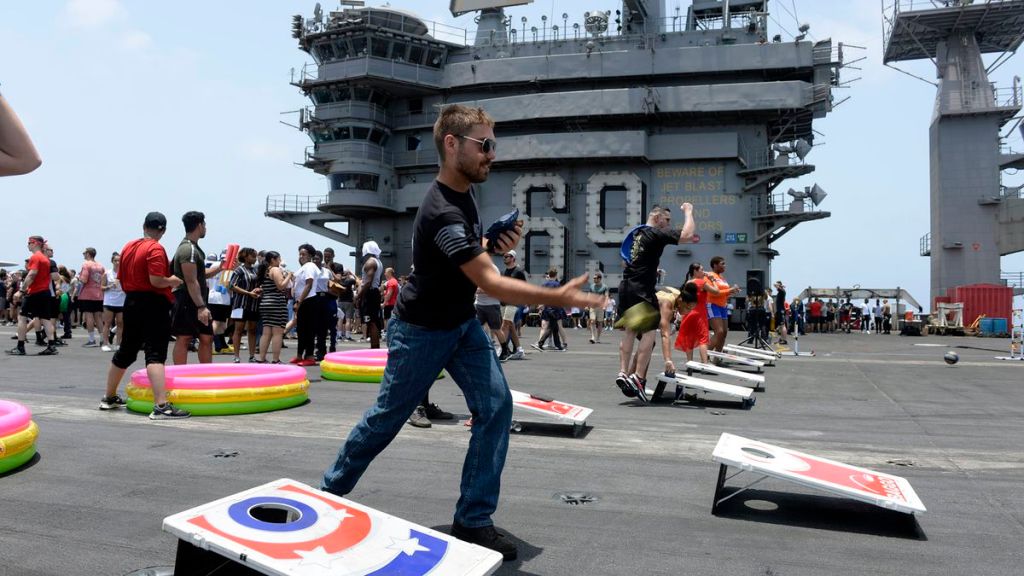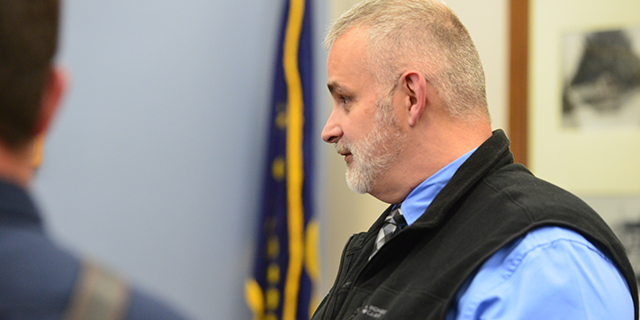Dodging virus, Navy ships break record for staying at sea
Published 6:00 am Saturday, June 27, 2020

- In this June 6 photo, U.S. Navy sailors participate in sporting events on the flight deck of the aircraft carrier USS Dwight D. Eisenhower. When coronavirus made U.S. Navy ship stops in foreign countries too risky, the Eisenhower and the USS San Jacinto had to keep moving. Thursday, they notched their 161st consecutive day at sea, breaking the previous Navy record of 160 days.
WASHINGTON — The two U.S. warships in the Middle East weren’t aiming to break a record.
Trending
But when the coronavirus made ship stops in foreign countries too risky, the USS Dwight D. Eisenhower and the USS San Jacinto were ordered to keep moving and avoid all port visits.
On Thursday, as they steamed through the North Arabian Sea, they notched their 161st consecutive day at sea, breaking the previous Navy record of 160 days. And they’re on pace to crush it, since they won’t hit land again until they get home to Virginia later this year.
The milestone, Navy Capt. Kyle Higgins said, “is not one that I think we really wanted but one that the circumstances of the world thrust upon us. And we embraced it with style.”
Trending
When the ships left home in January, COVID-19 was just starting to emerge. By the time they crossed the Atlantic and moved into the Mediterranean Sea, the virus was escalating.
In March, Vice Adm. Jim Malloy, the Navy’s 5th Fleet commander, ordered a stop to all port visits to reduce the chance of spreading the virus through the fleet. Other ships were battling outbreaks, including the USS Theodore Roosevelt, which got sidelined in Guam.
With that, Higgins, the Eisenhower commander, and Capt. Edward Crossman, the San Jacinto commander, knew their sailors wouldn’t set foot on land for some time. Both were interviewed a few days before the ships broke the record.
For more than five months, the Eisenhower, an aircraft carrier, and the San Jacinto, the guided-missile cruiser that accompanies it, have been at sea, with no onboard visitors and strict controls over how aircraft deliver their supplies.
The isolation has been challenging. Port calls not only give sailors time for rest and relaxation, they also allow experts to come aboard to do difficult repairs.
When the San Jacinto’s helicopter bay door broke, the crew members had to get creative. It was the middle of the night, and they realized they needed to replace a large sprocket.
“My guys did the research, and they said, ‘Hey, these 90-pound dumbbells are made from the same material that we need for this gear,’” Crossman said in an interview from the ship. So, they took the dumbbell down to the machine shop and created the part.
Petty Officer 1st Class Joshua Grimes, a machinist mate, is one of the sailors responsible for keeping machinery operating. When the door broke, it was his team that figured out how to fix it.
“Definitely the helo hangar door is the craziest thing we pulled off,” he said.
Eisenhower crew members had to replace a large, critical fan motor for the flight deck. It took four teams from the electrical, engineer, supply and machinist departments, but after consulting with experts on shore, they broke down the fan, got it onto a makeshift platform and installed the new part.
“Normally, this job would have called for cutting into the ship to get it down there,” said Higgins. “I’m happy to report that the fan and motor are operating fine and we are 100% operational again because of it.”
Crew entertainment has also gotten creative. Disappointed sailors watched as they passed countries along the Mediterranean and headed through the Red Sea without stopping.
Higgins and Crossman said they’re trying to give sailors dedicated time off — sometimes a full 24 hours to do whatever they want, other times a couple days off in a row.
On the San Jacinto, sailors substituted a mustache contest for the March Madness tournament. The 64-person bracket competed to see who could grow the ugliest mustache.
“There’s definitely some disappointment in not going into port, especially considering our original plans. But we’ve made it this far,” Grimes said. “It actually makes a lot of us feel very proud that we can be part of this. … The longest I’ve been underway is a little over 40 days, and it’s destroyed that record.”
The 160-day record was set in February 2002 by the USS Theodore Roosevelt, early in the Afghanistan war. The previous 152-day record was set by the Eisenhower in 1980 during the Iranian hostage crisis. Navy historians say it’s difficult to check long into the past because records are spotty.
Both ship captains planned celebrations.








